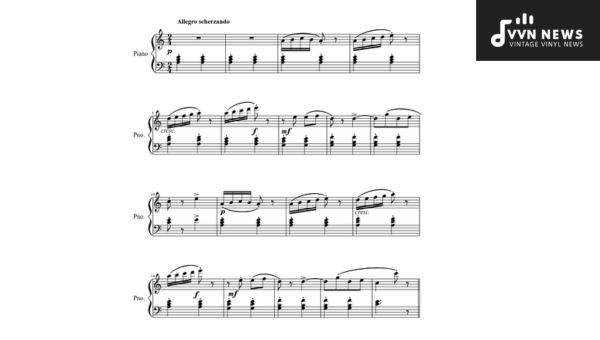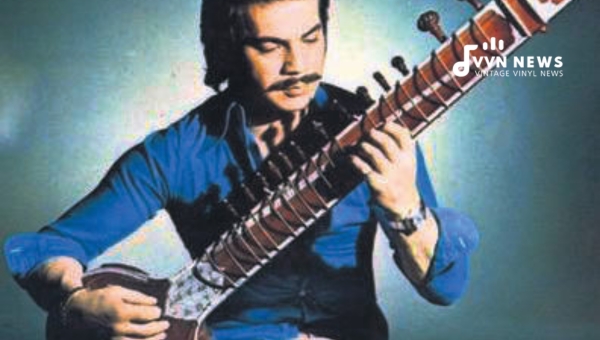In the diverse world of music, it’s easy to get lost in the sheer magnitude of varying styles, genres, and forms. Lovers of musical art often stumble across unfamiliar terms like ‘arabesque.’
So, what is arabesque in music? It’s a captivating term, filled with mystery and charm, waiting to be discovered by those willing to tune into its unique rhythm.
Arabesque resides predominantly in the realm of Romantic period compositions. It is not directly akin to a genre or style; instead, it is more akin to a form or pattern found within musical compositions.
This intriguing element provides an aesthetic experience that transcends traditional barriers, igniting imagination while engaging listeners in a profound auditory journey.
What Is Arabesque In Music?
Arabesque in music is a style or technique found in Western classical and Middle Eastern music. It refers to ornate and decorative melodies that weave throughout a composition.
The term comes from the Arabic word “arabīyah,” meaning Arabian or Arabic, and is inspired by the intricate patterns and curves of Islamic art.
Arabesque music has its roots in traditional Middle Eastern music, particularly during the Islamic Golden Age. Composers experiment with scales, rhythms, and melodic ornaments to create complex and beautiful compositions.
Prominent composers like Claude Debussy have incorporated arabesque elements into Western classical music.
Arabesque’s influence can be seen in both historical compositions and modern interpretations of the genre.
The origins of arabesque in music can be traced back to traditional Middle Eastern music. Arabesque music emphasizes decorative melodies that flow throughout a piece.
The term “arabesque” comes from the Arabic word “arabīyah,” meaning Arabian or Arabic.
Arabesque draws inspiration from intricate patterns and curves found in Islamic art. It became prominent during the Islamic Golden Age when scholars experimented with scales, rhythms, and melodic ornaments.
Composers create complex compositions through arabesque melodies and improvisations. Prominent composers like Claude Debussy have incorporated arabesque elements into Western classical music.
Arabesque’s influence has shaped both historical compositions and modern interpretations of the genre.
What is the Origin of Arabesque in Music?

The origin of Arabesque in music can be traced back to the traditional music of the Middle East, particularly in Arabic and Persian cultures.
It is believed that the term “arabesque” itself derives from the Arabic word “arabīyah,” meaning Arabian or Arabic. However, the concept of arabesque as a decorative motif can be found in various art forms and cultures throughout history.
Arabesque in music became particularly prominent during the Islamic Golden Age, which spanned from the 8th to the 14th centuries.
This era saw significant advancements in various fields, including mathematics, science, and arts. Music played an integral role during this period, with scholars experimenting with scales, rhythms, and melodic ornaments.
The intricate and ornate nature of arabesque music largely reflects its visual counterpart found in Islamic architecture and design.
It draws inspiration from delicate geometric patterns, calligraphy, and motifs found in mosques and palaces.
The artistry and complexity involved in creating these designs were translated into musical compositions through intricate melodies and improvisations.
Arabesque music not only flourished in Middle Eastern cultures but also made its way to Western classical music through influential composers like Claude Debussy.
They were captivated by the ethereal beauty and mysterious allure of arabesque melodies. As a result, western classical compositions began incorporating arabesque elements into their works.
The origin of arabesque in music can be traced back to Arabic and Persian traditions during the Islamic Golden Age.
Its connection to Islamic architecture’s decorative motifs has played a crucial role in shaping this musical style throughout history.
Also Read: F Music Note [Unlock The Secrets Of The Musical Alphabet]
How is Arabesque Music Characterized?
Arabesque music is characterized by several distinct features that set it apart from other musical styles. Here are the main elements that define arabesque music:
Ornate Melodies
Arabesque music is known for its intricate and ornamental melodies. These melodies often feature delicate and complex patterns, with notes weaving in and out of each other seamlessly.
The melodies can be highly embellished, with trills, turns, and grace notes adding decorative flair to the composition.
Modal Scales
Arabesque music often utilizes modal scales, which differ from the familiar major and minor scales found in Western music.
Maqam (the Arabic equivalent of mode) is a fundamental concept in Arabesque music, encompassing various scales with different combinations of intervals.
Improvisation
Improvisation plays a significant role in arabesque music. Musicians are encouraged to add their own embellishments and variations to a pre-existing melody or improvisational section.
This allows for individual expression and gives each performance a unique touch.
Complex Rhythms
Arabesque music incorporates complex rhythmic patterns that add depth and intricacy to the compositions.
Syncopation, irregular accents, and intricate drumming techniques are commonly employed to create rhythmic interest.
Long Phrases
Arabesque melodies are often characterized by long phrases that flow smoothly from one note to another without interruption. These extended phrases create a sense of continuity and elegance in the music.
Lyrical Expressiveness
Arabesque pieces often evoke emotions and tell stories through their melodic lines. The expressive nature of the music allows performers to convey feelings ranging from joyous celebrations to melancholic introspection.
Arabesque music is characterized by ornate melodies, modal scales, improvisation, complex rhythms, long phrases, and lyrical expressiveness.
These elements come together to create a captivating and intricate musical style that resonates with listeners.
Whether you are exploring traditional Middle Eastern compositions or Western classical works influenced by arabesque, these characteristics will guide your appreciation and understanding of this enchanting form of music.
Also Read: Phrygian Mode [Adding Exotic Flair To Your Musical Compositions]
What are the Compositional devices of the Arabesque?

In music, arabesque employs various compositional devices to achieve its distinct ornamental and flowing quality.
These devices are essential in creating the captivating melodies that define this musical style. Let’s explore some of the key elements and techniques used in arabesque compositions:
Ornamentation
Arabesque music is characterized by intricate ornamentation that embellishes the melodies. This includes trills, turns, mordents, appoggiaturas, and grace notes.
These ornamental flourishes add decorative embellishment to the melodic lines, enhancing their beauty and elegance.
Melodic Contour
The melodic contour in arabesque often features smooth and undulating lines. The melodies frequently ascend or descend in a sweeping manner, creating a sense of fluidity and grace.
The use of wide intervals also adds to the expressive nature of these melodies.
Rhythmic Flexibility
Arabesque compositions often incorporate rhythmic flexibility, with musicians inserting subtle variations into the phrasing and timing.
This allows for a more expressive interpretation of the melody while maintaining its underlying pulse.
Modulation
Modulation refers to a change in a key within a musical composition. Arabesque music utilizes modulation to create dynamic shifts, adding interest and contrast to the overall piece.
These modulations often occur smoothly, guiding the listener through different tonalities.
Improvisation
Improvisation is another essential element of arabesque music. Musicians are given the freedom to embellish and expand upon melodic themes, weaving intricate patterns that showcase their skill and creativity.
These compositional devices work together seamlessly to create the characteristic beauty and elegance of arabesque music. From ornamentation to melodic contour and improvisation, each element contributes to crafting captivating melodies that reflect this rich musical tradition.
Also Read: Mixolydian Mode [Add Depth & Richness To Your Music Today]
Who are the Prominent Composers of Arabesque?
Arabesque has had a significant impact on Western classical music, with several composers incorporating its mesmerizing elements into their compositions.
Let’s explore some of the prominent composers who have contributed to the development of arabesque in music:
1. Pyotr Ilyich Tchaikovsky
Tchaikovsky, the renowned Russian composer, known for his emotive and expressive compositions, also delved into the world of arabesque.
In his ballet “The Nutcracker,” Tchaikovsky expertly weaves arabesque melodies throughout various pieces, creating an enchanting and whimsical atmosphere.
2. Cécile Chaminade
Chaminade was a French composer and pianist known for her lyrical and virtuosic piano compositions.
Her musical style often incorporated arabesque elements, with delicate and intricate melodic lines that showcased her technical prowess.
3. Enrique Granados:
Granados was a Spanish composer whose works often showcased his love for Spanish folk traditions.
His piano composition “Danza Española No. 5,” also known as “Andaluza,” beautifully captures the essence of arabesque through its ornate melodies and rhythmic patterns.
4. Moritz Moszkowski
Moszkowski, a Polish-German composer and pianist, has made significant contributions to the piano repertoire with his charming and lyrical compositions.
Known for his intricate fingerwork and melodic lines, Moszkowski’s pieces frequently incorporate arabesque influences.
5. Robert Schumann
Schumann was a German composer considered one of the most influential figures in Romantic music. While he is not typically associated with arabesque specifically, his works often feature flowing melodies reminiscent of arabesque style.
6. Marin Marais
Marais was a French Baroque composer known for his compositions for the viola da gamba. His pieces, such as “Les Folies d’Espagne,” showcase intricate ornamentation and melodic lines, reminiscent of the arabesque style.
7. Claude Debussy
Debussy, a French composer considered one of the pioneers of musical Impressionism, was captivated by the allure of arabesque aesthetics.
His compositions, such as “Clair de Lune” and “Arabesque No. 1,” feature delicate and flowing melodies that evoke a sense of mystery and elegance.
These composers have left an indelible mark on the world of music through their incorporation of arabesque elements in their works.
From Tchaikovsky’s ballet to Debussy’s iconic compositions, they have demonstrated the timeless beauty and expressive possibilities that arabesque brings to music.
Also Read: A Major Scale [The Key To Bright, Cheerful Musical Pieces]
How has Arabesque Influenced Western Music?

The influence of Arabesque music on Western classical music cannot be overstated. It has left a lasting imprint on the compositions of several renowned composers and continues to shape contemporary musical expressions.
Here are some ways in which Arabesque has influenced Western music:
1. Middle Eastern Musical Motifs
Arabesque melodies, with their distinctive scales and ornamentation, have found their way into Western classical compositions.
Composers like Maurice Ravel and Claude Debussy drew inspiration from Middle Eastern musical motifs and incorporated them into their works, creating a unique fusion of Western and Eastern styles.
2. Ornamental Melodies
The arabesque style introduced the concept of ornamental melodies to Western music. Musicians began experimenting with embellishments, trills, and grace notes, adding vividness and intricacy to their compositions.
3. Exotic Harmonies
Arabesque introduced exotic harmonic progressions to Western music by incorporating modes or scales commonly used in Middle Eastern traditions.
These harmonies brought new tonal colors and flavors, departing from the traditional European tonal system.
4. Rhythmic Innovations
Middle Eastern rhythmic patterns often differ from those found in Western music. The intricate rhythms of Arabesque have influenced composers to explore unconventional time signatures and syncopations.
5. Coloristic Orchestration
Inspired by the rich timbral palette of Middle Eastern instruments, composers started exploring new orchestral textures in their works.
They experimented with different instrumental combinations to recreate the unique soundscape associated with Arabesque music.
Arabesque’s influence on Western music has led to a broader appreciation for diverse musical traditions around the world.
Its introduction of exotic melodies, harmonies, rhythms, and orchestrations has expanded the creative possibilities for composers and enriched the listening experiences for audiences worldwide.
Modern Interpretations of Arabesque Music
Arabesque music has evolved, blending with various musical traditions and genres to create modern interpretations that continue to enchant listeners.
Here are some of the notable modern interpretations of arabesque music:
- Fusion with Jazz and World Music: Contemporary musicians have infused arabesque elements into jazz and world music, creating a unique fusion of styles. This fusion often involves improvisations, complex rhythms, and intricate melodic patterns.
- Electronic Arabesque: With advancements in technology, electronic music producers have embraced arabesque motifs, blending traditional instruments and melodies with electronic beats and synth textures. This genre offers a contemporary take on arabesque while retaining its essence.
- Film Soundtracks: Arabesque music has made its mark in the world of film soundtracks, adding exotic flavors to cinematic compositions. Composers incorporate arabesque motifs to enhance the atmosphere and evoke a sense of mystery or allure.
- Contemporary Classical Music: Many contemporary classical composers draw inspiration from arabesque music while incorporating their artistic language. They explore new harmonic structures, experiment with complex rhythms, and integrate the spirit of arabesque into their compositions.
- Pop Music Influences: Arabesque elements can also be found in popular music genres such as pop and rock. Singers incorporate ornamental vocal techniques reminiscent of traditional Arabic singing styles and infuse their compositions with Middle Eastern melodies.
The modern interpretations of arabesque music showcase its adaptability across various genres while preserving its captivating allure.
Whether it’s fusion with jazz, electronic experimentation, or inclusion in film soundtracks, arabesque continues to inspire contemporary musicians with its enchanting beauty.
FAQs about Arabesque in Music
What is the main characteristic of arabesque music?
Arabesque music is characterized by ornate and decorative melodies that flow gracefully, creating an intricate and enchanting sound.
Who are some prominent composers known for their arabesque compositions?
Some prominent composers known for their arabesque compositions include Claude Debussy, Maurice Ravel, and Nikolai Rimsky-Korsakov.
How has arabesque music influenced Western classical compositions?
Arabesque music has influenced Western classical compositions by introducing exotic scales, melodic ornaments, and rhythmic variations into the musical vocabulary.
Is arabesque music solely found in Middle Eastern cultures?
While its origins can be traced back to Middle Eastern cultures, arabesque music has transcended geographical boundaries and has made its way into various musical traditions around the world.
Are there any modern interpretations of arabesque music?
Yes, contemporary artists have adopted the concept of arabesque in their works, blending traditional elements with modern instruments and electronic sounds to create unique and innovative compositions.
Conclusion
Arabesque in music is a style and technique that draws inspiration from Middle Eastern traditions and Islamic art forms.
It is characterized by intricate, decorative melodies that flow gracefully throughout a composition.
The origin of arabesque can be traced back to Arabic and Persian cultures during the Islamic Golden Age, where it flourished in both architecture and music.
Over time, arabesque has influenced Western classical compositions and continues to be explored by contemporary musicians.
Its fusion of beauty, complexity, and cultural significance makes arabesque a captivating element in the world of music.








